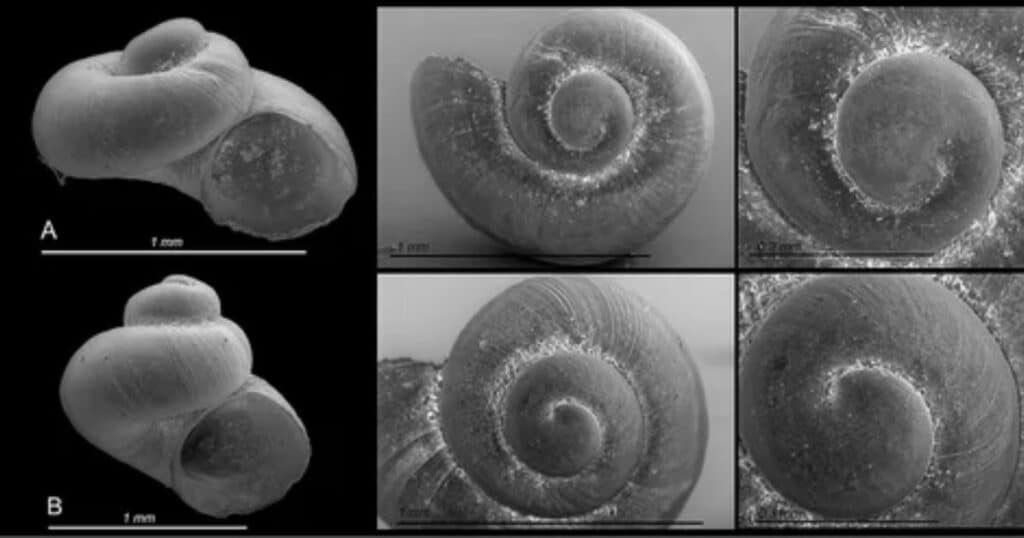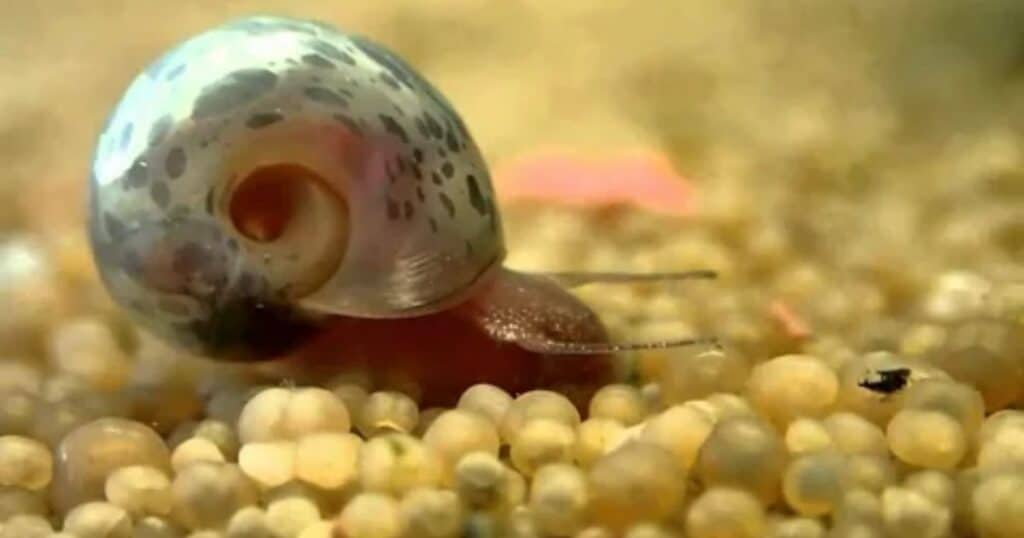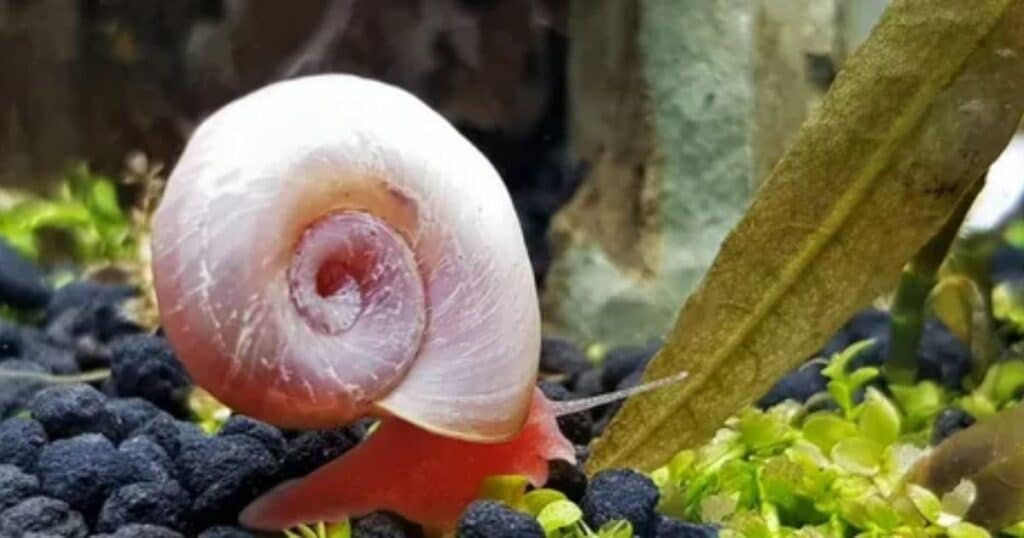Are you a proud aquarium owner who’s recently spotted mysterious, jelly-like clusters clinging to your tank’s surfaces? Chances are, you’ve stumbled upon a clutch of snail eggs! These tiny, often overlooked additions to your aquatic ecosystem can spark both curiosity and concern. Whether you’re a seasoned aquarist or a newbie to the fish-keeping hobby, understanding the ins and outs of snail eggs in your fish tank is crucial for maintaining a healthy, balanced environment for your underwater friends.
In this deep dive into the world of aquarium snail eggs, we’ll explore everything from identification to management, helping you make informed decisions about these little surprises in your tank. So, let’s embark on this slimy yet fascinating journey through the life cycle of snail eggs and their impact on your aquatic haven!
Identifying Snail Eggs in Your Aquarium
Before we delve into the nitty-gritty of snail egg management, it’s essential to know what you’re dealing with. Snail eggs in fish tanks can sometimes be mistaken for other aquarium phenomena, so let’s clear up any confusion.
What Do Snail Eggs Look Like?

Snail eggs in your fish tank typically appear as small, translucent, jelly-like masses. These clusters can vary in size and shape depending on the snail species, but they generally share some common characteristics:
- Size: Usually 1-5 mm in diameter for individual eggs
- Color: Mostly clear or slightly opaque, sometimes with a tinge of white or pink
- Texture: Gelatinous and slightly sticky
- Shape: Often in round or oval clusters, resembling tiny bunches of grapes
You’ll most likely find these egg clusters attached to various surfaces in your aquarium. Some common locations include:
- Tank walls (especially in corners or near the water line)
- Underneath leaves of aquatic plants
- On driftwood or decorative rocks
- Inside filter compartments
- On the underside of floating plants
Pro Tip: Use a magnifying glass for a closer look if you’re unsure. Snail eggs are fascinating to observe up close!
READ MORE POST: Bubbles On My Fish Tank: The Ultimate Guide To Understanding And Solving Aquarium Fizz
Types of Snails That Lay Eggs in Fish Tanks
Not all snails are created equal when it comes to egg-laying habits. Here’s a quick rundown of common aquarium snail species and their egg-laying characteristics:
- Ramshorn Snails
- Egg appearance: Small, clear sacs containing 10-12 eggs
- Laying frequency: Can lay eggs every few days
- Hatch time: About 2-3 weeks
- Mystery Snails
- Egg appearance: Pink or white clusters above the waterline
- Laying frequency: Every 2-4 weeks
- Hatch time: 2-3 weeks
- Malaysian Trumpet Snails
- Egg appearance: Rarely seen as they’re live-bearers
- Laying frequency: N/A (give birth to live young)
- Hatch time: N/A
- Pond Snails
- Egg appearance: Clear, jelly-like masses with numerous tiny eggs
- Laying frequency: Can lay eggs daily
- Hatch time: 1-2 weeks
- Nerite Snails
- Egg appearance: Small, white, sesame seed-like eggs
- Laying frequency: Frequently, but eggs rarely hatch in freshwater
- Hatch time: N/A in freshwater (require brackish conditions)
Understanding which type of snail you’re dealing with can help you predict egg-laying patterns and make informed decisions about population control.
The Snail Egg Life Cycle: From Jelly to Tiny Gastropods

Now that we’ve covered the basics of identification, let’s explore the fascinating journey of snail eggs from conception to hatching. This knowledge will give you a deeper appreciation for these tiny marvels and help you manage your tank’s snail population more effectively.
How Snails Reproduce in Aquariums
Snail reproduction in fish tanks is a surprisingly complex process. Most aquarium snails are hermaphrodites, meaning they possess both male and female reproductive organs. This unique characteristic allows them to reproduce rapidly under the right conditions.
Here’s a brief overview of snail reproduction methods:
- Self-fertilization: Some snail species can fertilize their own eggs, leading to rapid population growth.
- Cross-fertilization: Many snails prefer to mate with others, exchanging genetic material for more diverse offspring.
- Parthenogenesis: Certain species, like Malaysian Trumpet Snails, can produce offspring without fertilization.
Several factors can trigger egg-laying behavior in aquarium snails:
- Abundant food sources: Excess algae or leftover fish food
- Optimal water conditions: Stable temperature and pH levels
- Lack of predators: Feeling safe in their environment
- Maturity: Reaching reproductive age (varies by species)
Fun Fact: A single pond snail can lay up to 1,000 eggs in a month under ideal conditions!
Snail Egg Development Timeline
The journey from egg to baby snail is a relatively quick process in the aquarium world. Here’s a general timeline of snail egg development:
- Day 1-3: Eggs are laid and begin to develop
- Day 4-7: Embryos start to form within the eggs
- Day 8-14: Baby snails develop shells and become more visible inside the eggs
- Day 15-21: Eggs hatch, releasing tiny snails into the aquarium
Keep in mind that this timeline can vary depending on the snail species and environmental conditions. Warmer water temperatures typically speed up the development process.
The Great Debate: Friend or Foe?
As with many aspects of aquarium keeping, the presence of snail eggs in your fish tank isn’t inherently good or bad. It’s all about balance and personal preference. Let’s weigh the pros and cons to help you decide whether these slimy little guests are welcome in your aquatic paradise.
Benefits of Snails in Your Fish Tank
Snails often get a bad rap in the aquarium hobby, but they can actually provide several benefits to your tank’s ecosystem:
- Cleaning crew extraordinaire: Snails are nature’s little janitors, happily munching on:
- Algae
- Decaying plant matter
- Leftover fish food
- Detritus (organic waste)
- Algae control: Some snail species, like Nerites, are particularly effective at keeping algae growth in check.
- Indicators of water quality: Sudden changes in snail behavior or population can alert you to water quality issues.
- Biodiversity: Snails add another layer of complexity to your tank’s ecosystem.
- Natural food source: Some fish species enjoy snacking on snail eggs or baby snails.
Potential Problems with Snail Eggs in Aquariums
Of course, it’s not all roses (or should we say, water lilies?) when it comes to snail eggs in fish tanks. Here are some potential downsides to consider:
- Overpopulation: Without proper management, snail populations can explode, leading to:
- Increased bioload on your filtration system
- Competition for resources with other tank inhabitants
- Potential oxygen depletion in extreme cases
- Aesthetic concerns: Some aquarists find snail eggs unsightly, especially when they appear on tank walls or decorations.
- Plant damage: While many snails prefer algae, some species may nibble on live plants if other food sources are scarce.
- Clogged filters: In large numbers, snails or their eggs can potentially obstruct filter intakes.
- Unwanted hitchhikers: Snail eggs can sometimes introduce parasites or diseases to your tank.
Managing Snail Eggs in Your Fish Tank

Now that we’ve explored the pros and cons, let’s dive into practical strategies for managing snail eggs in your aquarium. Whether you’re looking to control the population or encourage snail breeding, these tips will help you maintain the perfect balance for your underwater world.
To Remove or Not to Remove?
The million-dollar question: should you remove snail eggs from your fish tank? There’s no one-size-fits-all answer, but here are some factors to consider:
Pros of removing snail eggs:
- Prevents population explosions
- Maintains aesthetic preferences
- Allows for more control over tank inhabitants
Cons of removing snail eggs:
- Disrupts the natural ecosystem
- Removes a potential food source for some fish
- Can be time-consuming if done regularly
If you decide to remove snail eggs, here’s how to do it safely:
- Gently scrape eggs off surfaces using a soft algae scraper or old credit card.
- Use a siphon or turkey baster to suck up floating egg clusters.
- Dispose of eggs in the trash or freeze them before discarding to prevent accidental introduction to local waterways.
Remember: Always wash your hands thoroughly after handling anything in your aquarium to prevent the spread of harmful bacteria or parasites.
Natural Predators: Nature’s Snail Control
If you’re looking for a more hands-off approach to snail egg management, consider introducing natural predators to your tank. Many fish species enjoy snacking on snail eggs and young snails, helping to keep populations in check.
Here’s a list of fish known to eat snail eggs or young snails:
- Clown Loach
- Yoyo Loach
- Zebra Loach
- Dwarf Chain Loach
- Betta Fish (sometimes)
- Gourami species
- Pufferfish (not recommended for community tanks)
Caution: Always research fish compatibility before adding new species to your tank. Some snail-eating fish may also pose a threat to other tank inhabitants or have specific care requirements.
Prevention Strategies for Controlling Snail Populations
As the saying goes, an ounce of prevention is worth a pound of cure. Here are some strategies to limit snail breeding and egg production in your fish tank:
- Control feeding: Overfeeding is a common cause of snail population explosions. Feed your fish only what they can consume in 2-3 minutes.
- Regular maintenance: Perform weekly water changes and substrate vacuuming to remove excess organic matter that snails feed on.
- Quarantine new plants: Inspect and quarantine new plants for at least two weeks before adding them to your main tank to prevent introducing snail hitchhikers.
- Use snail traps: DIY or store-bought snail traps can help control adult snail populations, reducing egg production.
- Consider chemical controls: As a last resort, there are snail-killing products available, but use these cautiously as they can harm other invertebrates and disrupt your tank’s balance.
- Maintain water quality: Keep your water parameters stable and within the optimal range for your fish. Stressed snails may breed more rapidly.
Harnessing the Power of Snail Eggs
Instead of viewing snail eggs as a nuisance, why not explore ways to turn them into an asset for your aquarium hobby? Let’s look at some creative ways to make the most of these tiny, gelatinous clusters.
Using Snail Eggs as Fish Food
Many fish species consider snail eggs a delicacy, and they can provide valuable nutrition for your finned friends. Here’s why snail eggs can be a great food source:
- High in protein: Snail eggs are packed with protein, essential for fish growth and health.
- Natural food source: Mimics what many fish would eat in the wild.
- Promotes natural behaviors: Encourages foraging and hunting instincts in your fish.
To use snail eggs as fish food:
- Collect eggs using a soft brush or by gently scraping them off surfaces.
- Rinse the eggs in dechlorinated water to remove any debris.
- Offer small amounts to your fish, observing their interest and adjusting quantities as needed.
Note: Not all fish will show interest in snail eggs. Experiment to see which of your aquatic pets enjoy this natural treat.
Snail Breeding for Profit or Hobby
Believe it or not, there’s a growing market for aquarium snails in the USA. Whether you’re looking to offset your fish-keeping costs or dive into a new facet of the hobby, breeding snails can be both fun and potentially profitable.
Here’s a quick guide to get you started:
- Choose your snail species: Some popular options include:
- Ramshorn Snails (various colors available)
- Mystery Snails (come in a range of attractive colors)
- Nerite Snails (excellent algae eaters)
- Set up a dedicated breeding tank: A 5-10 gallon tank is sufficient for most small snail species.
- Provide optimal conditions:
- Stable temperature (70-80°F for most species)
- Slightly alkaline water (pH 7.0-8.0)
- Plenty of calcium (for shell development)
- Varied diet (algae wafers, blanched vegetables, commercial snail foods)
- Encourage breeding: Maintain excellent water quality and provide plenty of surfaces for egg-laying.
- Harvest and sell: Once your snail population grows, you can sell excess snails to:
- Local fish stores
- Online aquarium forums
- Fellow hobbyists in your area
Pro Tip: Research local regulations regarding the sale of live animals, and always provide care instructions to your buyers.
Conclusion: Embracing the Snail Egg Experience
As we’ve explored in this comprehensive guide, snail eggs in your fish tank are more than just a slimy surprise – they’re a window into the fascinating world of aquatic ecosystems. Whether you choose to remove them, harness their potential, or simply observe their development, snail eggs offer a unique opportunity to deepen your understanding and appreciation of your aquarium.
Remember, there’s no one-size-fits-all approach to managing snail eggs in fish tanks. The key is to find the right balance for your specific setup and goals. By staying informed, observing closely, and making thoughtful decisions, you can turn the presence of snail eggs from a potential problem into an enriching aspect of your aquarium hobby.
So the next time you spot a cluster of tiny, jelly-like orbs in your tank, take a moment to marvel at the miracle of life unfolding in your own little slice of the underwater world. After all, it’s these small wonders that make fish-keeping such a rewarding and endlessly fascinating pursuit.
ALSO READ THIS POST: 15 Gallon Fish Tank: The Perfect Home For Your Aquatic Friends
FAQ’s
How to care for mystery snails?
Provide a balanced diet of algae wafers and blanched vegetables. Maintain clean water with stable parameters (pH 7.0-8.0, temperature 68-82°F). Ensure sufficient calcium for healthy shell growth.
How can you tell if mystery snail eggs are good?
Healthy mystery snail eggs are pink or white and remain firm. If they turn gray, deflate, or develop mold, they’re likely not viable. Fertile eggs typically hatch within 2-3 weeks.
What to do with snail eggs in a fish tank?
You can leave them to hatch if you want more snails, or remove them to control the population. To remove, gently scrape them off surfaces with a soft tool or use a siphon to suck them up.
What do snail eggs look like on aquarium glass?
Snail eggs on glass appear as small, translucent, jelly-like clusters. They’re often round or oval-shaped, resembling tiny bunches of grapes, and can be clear, white, or pinkish in color.
Is it bad to have snails in a fish tank?
Snails can be beneficial, eating algae and detritus. However, they can overpopulate quickly, increasing bioload. Whether they’re good or bad depends on your tank’s balance and your personal preferences.
How to take care of mystery snail eggs?
Keep the egg clutch above water but in a humid environment. Maintain a temperature around 75-80°F. Mist the eggs lightly if they appear dry. Remove any eggs that turn gray or moldy.

Davin Connor is an experienced author with 3 years in pets writing. Known for concise, informative content, he shares expertise on pet care, behavior, and health through his engaging articles.






